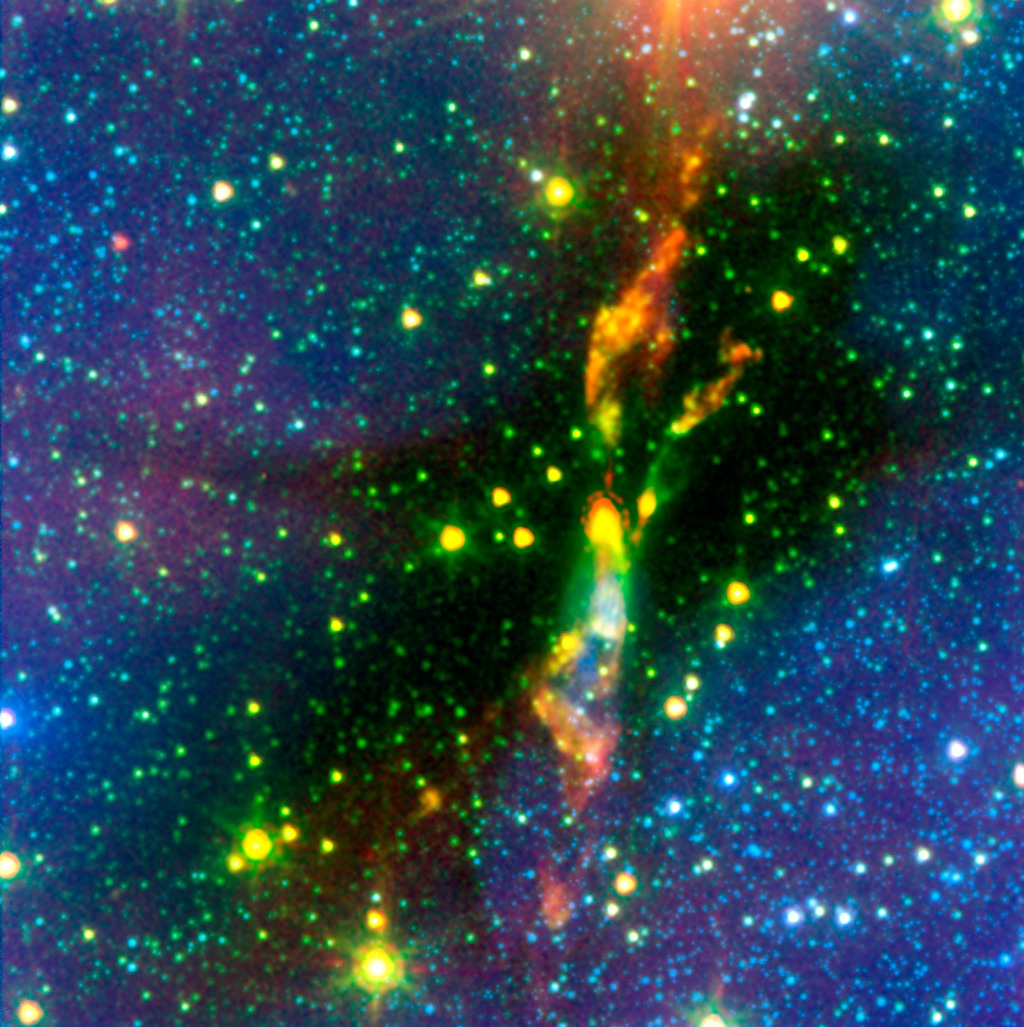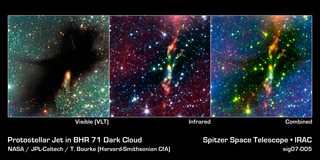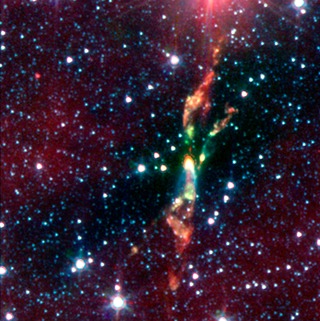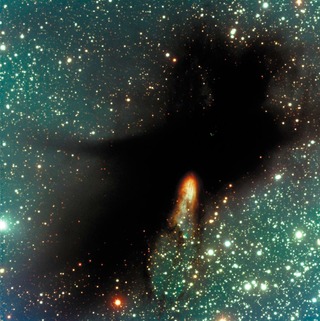
Credit: Spitzer infrared data: NASA/JPL-Caltech/T. Bourke (Harvard-Smithsonian CfA) & c2d Legacy Team; VLT visible light data: J. Alves (ESO), E. Tolstoy (Groningen), R. Fosbury (ST-ECF), & R. Hook (ST-ECF)
Observation • April 17th, 2007 • sig07-005b
sig07-005b
Two rambunctious young stars are destroying their natal dust cloud with powerful jets of radiation, as revealed in an infrared image from NASA's Spitzer Space Telescope. The stars are located approximately 600 light-years away in a cosmic cloud called BHR 71.
The combined visible-light and infrared composite shows that a young star's powerful jet is responsible for the rupture at the bottom of the dense cloud in the visible-light image. Astronomers know this because burst of light in the visible-light image overlaps exactly with a jet spouting-out of the left star, in the infrared image. The jets' changing colors reveals a cooling effect, and may suggest that the young stars are spouting out radiation in regular bursts.
The green tints at the beginning of the jet reveal really hot hydrogen gas, the orange shows warm gas, and the reddish wisps at the end represent the coolest gas. The fact that gas toward the beginning of the jet is hotter than gas near the middle suggests that the stars must give off regular bursts of energy -- and the material closest to the star is being heated by shockwaves from a recent stellar outburst.
Meanwhile, the tints of orange reveal gas that is currently being heated by shockwaves from a previous stellar outburst. By the time these shockwaves reach the end of the jet, they have slowed down so significantly that the gas is only heated a little, and looks red.
About the Object
- Name
- BHR 71
- Type
- Star > Evolutionary Stage > Protostar
- Star > Evolutionary Stage > Young Stellar Object
- Star > Circumstellar Material > Outflow
- Nebula > Type > Star Formation
- Nebula > Type > Jet
- Nebula > Appearance > Dark > Molecular Cloud
- Distance
- 600 Light Years
Color Mapping
| Band | Wavelength | Telescope |
| Optical | 440 nm | VLT |
| Optical | 700 nm | VLT |
| Infrared | 3.6 µm | Spitzer IRAC |
| Infrared | 4.5 µm | Spitzer IRAC |
| Infrared | 8.0 µm | Spitzer IRAC |
Astrometrics
- Position (J2000)
- RA =12h 1m 41.9s
- Dec = -65° 8' 45.3"
- Field of View
- 6.7 x 6.7 arcminutes
- Orientation
- North is 0.2° right of vertical







